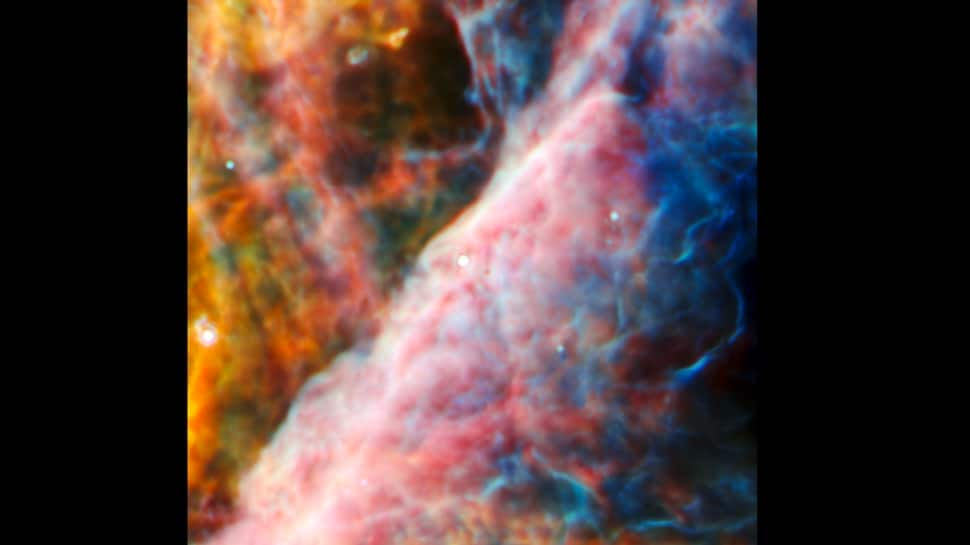In yet another breakthrough symbolizing the existence of life in the universe, the National Aeronautics and Space Administration (NASA) has made the surprising discovery of a carbon molecule that is said to be the foundation of all known life. The discovery was made by NASA’s James Webb Space Telescope. The International Space Agency revealed this in its latest website post.
“A team of international scientists has used NASA’s James Webb Space Telescope to detect for the first time a new carbon compound in space. Known as methyl cation (pronounced cat-i-on) (CH 3+) The known molecule is important because it aids in the formation of more complex carbon-based molecules. The methyl cation was detected in a young star system with a protoplanetary disk, known as d203-506, which Located approximately 1,350 light-years away in the Orion Nebula,” NASA said.
scientists are experimenting @NASAWeb For the first time, an important carbon compound has been detected in space. Known as the methyl cation (pronounced cat-i-on), it is believed to aid in the formation of more complex carbon molecules—the foundation of all known life: https://t.co/QVLCDQjCi8 pic.twitter.com/q9Hy0ZgXbt
— NASA (@NASA) 26 June 2023
It further states that carbon compounds form the foundation of all known life, and this is particularly interesting to scientists working to understand how life evolved on Earth, and whether it may exist elsewhere in our universe. and how to develop. “The study of interstellar organic (carbon-containing) chemistry, which Webb is opening up in new ways, is an area of keen interest to many astronomers,” NASA said.
Describing the role of the James Webb telescope in the discovery, NASA said, “Webb’s unique capabilities make it an ideal observatory to discover this important molecule. Webb’s excellent spatial and spectral resolution, as well as its sensitivity, all contributed to the team’s success. In particular, the discovery was bolstered by Webb’s detection of a series of prominent emission lines from CH3+.”

The discovery not only validates Webb’s incredible sensitivity, but also confirms the predicted central importance of CH3+ in interstellar chemistry, said Marie-Aline Martin-Drumel, a member of the science team at the University of Paris-Saclay in France.
“While the star in d203-506 is a small red dwarf, the system is bombarded by strong ultraviolet (UV) light from nearby hot, young, massive stars. Scientists believe that most of the planet-forming disk is exposed to such intense UV light.” undergo periods of radiation as stars form in clusters that often include massive, UV-producing stars,” NASA said.
NASA said that generally, UV radiation is expected to destroy complex organic molecules and that is why the discovery of CH3+ may seem a surprise. “However, the team speculates that UV radiation may actually provide the necessary source of energy for CH3+ to form. Once formed, it promotes additional chemical reactions to form more complex carbon molecules. In particular, the team notes that the molecules they see in d203-506 are quite different from those in normal protoplanetary discs. In particular, they could not detect any sign of water,” NASA said.